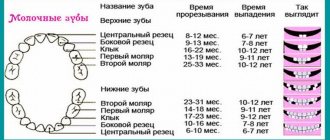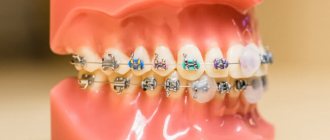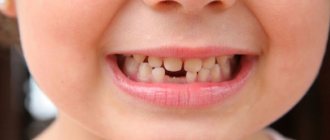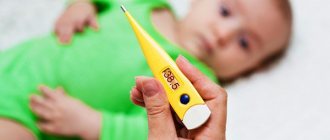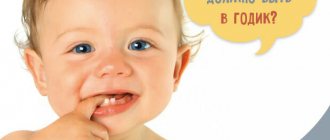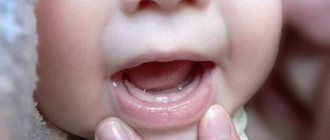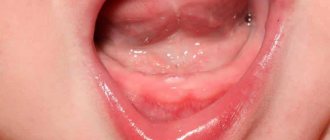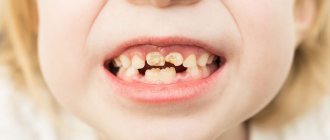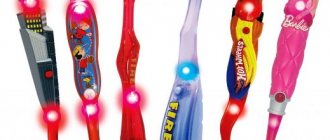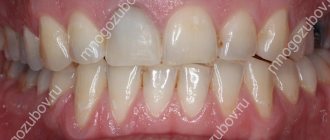Immediately when children are teething, it is advisable to purchase toys to hone the baby’s ability to chew something and gels that alleviate the child’s condition.
The beginning of the appearance of teeth is signaled by red and swollen gums, increased salivation and the desire to put everything in the mouth and gnaw. Sometimes it comes to sleepless nights, high fever, constant crying and even diarrhea. Doctors can recommend several options for helping your baby. There are drops, sprays, ointments, gels that relieve inflammation and relieve itching. For fever and diarrhea, tablets, syrups, and suppositories can be used.[1]
Strictly under the supervision of a pediatrician
What factors influence teething?
These are genetics and natural, social factors. For example, teething in a baby can be delayed by 2 times, which is caused by toxicosis during pregnancy, birth trauma, Rh conflict, prematurity, infectious processes in newborns, etc.
Eruption is delayed when the pregnant woman has heart defects, toxoplasmosis, or herpetic infection. If we talk about congenital diseases of the baby, dangerous diagnoses are hypothyroidism, rickets, sepsis and others. Most often, bottle-fed babies face this problem. Acquired childhood diseases of newborns - frequent acute respiratory infections, pneumonia, malocclusion, etc.
Conjunctivitis during teething
Symptoms of the disease (lacrimation, discharge of purulent contents from the eyes, etc.) can appear even during teething. This is a common phenomenon that should not cause parents to panic. It is enough to eliminate the symptoms with antibacterial drops (Tobrex). It is not recommended to use strong antibiotics or other similar drugs - if the illness drags on or additional symptoms appear, the child should be shown to a doctor as soon as possible.
Reference. The roots of the upper jaw teeth are located close to the baby's eyes, which causes the symptoms of the disease.
Temporary teeth
In most cases, three-year-old children have 20 primary incisors in their mouths. This amount lasts up to 5-6 years. Afterwards, temporary units begin to gradually fall out, and in the same order as they grew.
The timing and order of teething in children in the table
| Period of eruption | Tooth name |
| 4-6 months | lower anterior incisors |
| 7-10 months | upper anterior incisors |
| 10-12 months | upper lateral incisors |
| 12-18 months | lower lateral incisors, first molars |
| 20-24 months | upper/lower canines |
| 24-30 months | posterior molars |
Diagram of baby teeth eruption in children
Timing of baby teeth loss
Permanent teeth
At the age of 6 years, the time comes to replace baby teeth, but they begin to become loose at 5. The growth of permanent incisors depends on a number of factors, including climatic conditions, the quality of drinking water, environmental factors, and the usefulness of the children's diet.
Timing of teething in the table
| Timing of eruption | Name |
| 6-7 years | first molars |
| 7-8 | central incisors |
| 8-9 | lateral incisors |
| 10-12 | first premolars |
| 10-12 | second premolars |
| 11-12 | fangs |
| 12-13 | second molars |
| 16-25 | third molars |
The order of eruption of molars in children
The first to appear is the central incisor on the lower jaw, followed by the same one on the upper jaw. At the same time, the first molars erupt. Next come the lateral incisors above and below, then the canines on both sides. Starting from the age of 10, premolars appear - from the first to the third.
Eye teeth eruption in children
The timing of teething is different for all babies. Some toddlers can boast their first teeth as early as 4-5 months, while some children have their first teeth only at 8-9 months. At the same time, pediatricians in most cases reassure parents, explaining that there cannot be a “norm” here. Everything is very individual. Even the order of teething may differ for some children. However, we will still tell you the approximate timing of teething. So, at the age of 6-9 months, children develop central incisors, first in the lower and then in the upper jaw. Behind them, by the age of one year, the upper lateral incisors and lower lateral incisors erupt. At the age of 12-15 months, children erupt their first molars at the top and bottom. And after them, at 16-22 months, children’s eye teeth are cut. These are the fangs of the upper jaw, located exactly in the place where the optic nerve passes. That is why the eruption of eye teeth in children is often accompanied by lacrimation. It is also important to take into account the fact that the optic nerve is responsible for connecting the upper part of the child’s face with the central nervous system. Therefore, the growth of eye teeth is quite painful and painful for both the baby and his parents.
Symptoms of eye teeth in children
The main signs that a child is losing eye teeth are watery eyes and a runny nose. Due to the constant appearance of tears, the child may well develop conjunctivitis. In addition, fever with eye teeth in children is far from uncommon. It can rise up to 38°. The baby's gums become red and swollen, salivation increases, and itching and pain appear in the gums. The child begins to put into his mouth everything that comes into his hands. Often children also have pain in the ears and nose. Frequent symptoms of eye teeth in children are indigestion, diarrhea and loss of appetite. In addition, in a weakened body due to weakened immunity, an infection may additionally develop. Therefore, parents should closely monitor the child’s well-being and general health.
To help the baby cope with such a difficult task as teething and to ease his pain, parents can purchase a special silicone teether, which needs to be cooled a little in the refrigerator and allowed to be chewed by the baby. You can also give children a terry towel, dry bread or a piece of cool banana in their mouths. Parents can give their child a gum massage, during which, in the most painful moments, they can use anesthetic gel, chamomile oil or even bee honey (if the baby does not have allergies). Compresses with a decoction of medicinal herbs can be applied to swollen gums. At the same time, you should absolutely not use any alcohol-containing products to massage your gums. Also, you should not give your child aspirin or analgin. The only medicine that can be used when the temperature rises is suppositories or syrup with paracetamol. And then it is advisable to consult a doctor first.
Local pediatricians ask parents to very carefully monitor all the symptoms that arise in the baby during tooth growth. After all, for example, high fever and diarrhea may well be a sign of infection, just like a cough with a runny nose. Therefore, you should not expect that the eye teeth will come out and everything will go away on its own. It is better to show the child to the pediatrician just in case. Perhaps the baby needs additional treatment. And for any digestive disorders, even if diarrhea is actually caused by teething, you must give your baby as much water as possible. Indeed, for young children, dehydration is very dangerous. To make it easier for your child to endure the unpleasant period of teething, take him in your arms more often, caress him, play with him, hug him and try to distract him from the unpleasant sensations. Then the baby will be calmer, and teething will be less painful for him.
Deviations from the norm of eruption
This is an individual process that depends on internal and external factors. If the delay in the appearance of baby teeth is up to 2 months, do not panic ahead of time. But the following pathological processes should alert you.
Early eruption
It is observed in cases of disturbances in the functioning of the endocrine system and pathologies of the thyroid gland. Potential diagnoses include hyperthyroidism, hypergonadism, and Albright's syndrome. Also, doctors do not exclude the growth of a tumor, as an option - eosinophilic granuloma. Timely diagnosis and surgery are necessary.
Delay in eruption
This pathology progresses with dyspeptic and neurological disorders, infectious processes, metabolic disorders and rickets. Developmental delay may be associated with dysfunction of the pituitary gland, which is inherited (lack of tooth buds). If the milk units have not come out before the age of 1 year, there is a suspicion of congenital adentia.
Difficult teething
There are cases where the gums are very swollen and painful, and baby teeth do not appear for 2-3 weeks or more. With such symptoms, difficult eruption occurs, and only a pediatric dentist can help solve the problem. The child has all the symptoms that tooth germs will appear.
Violation of the direction of eruption
This problem more often arises when permanent units appear, which may be hampered by too large neighboring positions, or the remains of missing primary incisors. Under the influence of provoking factors, a displacement of the axis of the dentition is observed.
If you ignore the symptoms, jaw deformation occurs, and the child faces the problem of malocclusion. The health of neighboring positions is at risk. A timely response to a violation of the direction of appearance will help correct any deformation.
New incisor teeth begin to grow
Deviations in teething
Among the pathologies, dentists identify a violation of the order of appearance.
Deviations that can be determined by taking an x-ray.
- Edentia. Absence of a tooth germ as a consequence of disturbances in the prenatal period.
- Retention. Even though there was a rudiment, the tooth could not break through the gum. This happens when neighboring positions are displaced.
- Eruption with hematoma. The problem arises if a minor hematoma does not resolve, but grows. Potential complications include a broken jaw.
- Enamel hypoplasia. The baby tooth appears with brown or dark yellow grooves.
- Anomalies of tooth formation. This pathological process is caused by disturbances in the intrauterine period.
Teething symptoms
Parents notice that the gums in the child’s mouth swell and turn red. This is the first sign of imminent eruption.
Other changes in the baby’s well-being and behavior can also prompt such thoughts:
- increased salivation;
- biting everything that comes to hand;
- irritation, nervousness of the baby;
- swelling of the gums;
- grabbing ears;
- baby crying, disturbed sleep;
- mild fever;
- visible teeth inside the gums.
The symptoms go away on their own. If this process is noticeably delayed, it is better to enlist the support of a pediatric dentist.
2 months is the norm
What does gum look like when teething?
The day before, they acquire a loose structure, swell, swell and look reddened. There is pain on palpation, which disappears with the appearance of a white dot.
Uncharacteristic signs
Even diarrhea may not indicate indigestion, but teething.
There are other uncharacteristic signs of the process.
- Moist cough. The cough reflex is caused by the accumulation of saliva in the mouth. The symptom goes away on its own after 2-3 days, otherwise it is recommended to consult a pediatrician.
- Runny nose. Another consequence of excessive mucus accumulation in the nose. Snot is transparent and liquid and should not cause anxiety for young mothers. They go away on their own after 3-4 days.
- Heat. The mark on the thermometer may rise to 38 degrees. The temperature returns to normal after 2 days; conservative treatment is not required.
Dangerous symptoms
If there are any changes in your child's health, you should immediately contact your pediatrician.
- Vomit. More often occurs with increased activity of rotavirus and other infections.
- Small rashes on the gums. Red blisters filled with liquid should disappear within 2-3 days. If not, there is a possibility of a fungal infection.
- High-intensity hyperthermia. If the temperature is 38.5 degrees or higher for more than 3 days, and taking antipyretic drugs does not help, it is better to consult a doctor.
- Intoxication of the body. In this case, against the background of elevated temperature, prolonged vomiting and diarrhea are observed.
- Cramps. This symptom has nothing to do with teething, so you need to urgently call an ambulance.
- Redness and pain in the throat. It is possible that we are no longer talking about teething, but about infection of the upper respiratory tract.
- Allergic reactions. Such symptoms may occur when teeth appear, but it is better to consult a specialist regarding their etiology.
Boundary parameters
How to distinguish symptoms of teething from signs of disease
There are recommendations.
- If a cough with sputum lasts more than 2 days, accompanied by wheezing and shortness of breath, there is a high probability of damage to the upper respiratory tract.
- When nasal discharge is cloudy and mucous, with a greenish tint, and does not go away within 3 days, these are symptoms of the disease.
- If the temperature rises to 39 degrees, this symptom definitely has nothing to do with teeth.
Which teeth are the most painful for children to cut?
Fangs, fours and fives appear especially painful. The sharp edges cut through the gum tissue, and the child experiences an acute attack of pain. Not only the place where the first teeth appear, but also the entire mouth can hurt, and the gums can become completely inflamed.
Photo gallery
Signs of eruption of eye teeth
The main signs of teething include:
- lacrimation, often developing into conjunctivitis;
- swelling and redness of the gums, when touched the child begins to cry;
- runny nose (if it is not transparent, but green or yellow, then there is an infection in the child’s body);
- an increase in temperature (if it exceeds 38 degrees, you should urgently consult a doctor, as this may be a signal that more serious diseases are beginning to develop);
- itching in the gums, due to which the baby tries to put everything that is at hand in his mouth.
Moreover, against the background of eruption of eye teeth, not only conjunctivitis can occur, but also a number of other specific diseases, often infectious, since immunity is reduced. You can make sure that these diseases are associated with teething only after consulting a doctor and receiving test results.
Drugs that make teething easier for children
To relieve gum inflammation and relieve pain, topical medications can be used:
- gels;
- creams;
- sprays;
- drops.
Expert opinion Olga Borovikova There are plant-based tablets that have an analgesic and anti-inflammatory effect during teething. For fever, antipyretics are used. Any medications should only be prescribed by a doctor; self-administration or increasing the recommended dosage is strictly prohibited.
The baby's first lower tooth can erupt without complications. But problems begin with the top ones. It also happens the other way around. The following describes what can be used and when.
Painkillers
You can use the usual Nurofen - give it to your baby in the usual dose.
There are tablets designed to help children with teething - Dentokind, American drugs Chamomilla and Nighttime Teething Tablets.
- Dentokind are soft, easily soluble tablets. Contains extracts of chamomile, belladonna, pulsatilla and auxiliary components. Designed for resorption. The baby is dissolved in water or mixed in crushed form with porridge. Dosage - no more than 6 tablets per day up to a year, after a year - 2 tablets maximum 5 times a day. The break between doses is at least an hour. Duration of treatment – no more than 5 days. There are contraindications, allergic reactions are possible.
- Chamomilla – contains chamomile extract, has an anti-inflammatory effect. You should consult your doctor about taking it.
- Nighttime Teething Tablets is an American homeopathic medicine translated as nighttime dental tablets. In composition, method of administration and contraindications, they are similar to Dentokind.
Observation These tablets help not only infants, but even people over 15 years of age. Many cases have been described when an adult’s molar tooth is painfully sticking out - and dissolving the tablet in just half an hour relieves all the unpleasant sensations.
Pain relieving gels
Topical medications appear to be safer than tablets. But it all depends on the composition. Many gels contain an anesthetic that is extremely undesirable for a child. It is better to choose drugs without lidocaine.[2]
The following gels contain harmful substances:
- Kamistad baby;
- Dentinox;
- Kalgel.
They are used in extreme cases to relieve severe pain only as prescribed by a doctor.
There are gels containing less dangerous painkillers and anti-inflammatory substances - benzydamine and benzocaine.
The rules for their application are similar to those listed above - only in rare cases.
- Dentol Baby - recommended for use at night, acts immediately, has a liquid consistency, pleasant taste, cooling effect, lasts for 15 minutes.
- Cholisal - contains choline salicylate, which has a rapid analgesic effect and anti-edematous effect. The anti-inflammatory ability is maintained for 8 hours, recommended for children over 1 year old, used 2-3 times a day.
The best product for babies does not contain chemical components, but is based on plant extracts.
Such gels do not help everyone, since the body’s sensitivity is different.
- Pansoral - contains chamomile, which relieves inflammation, marshmallow root - heals and eliminates itching. Clears the airways and helps relieve cough. Allowed for children over 2.5 years old.
- Baby Doctor is an Israeli-made gel, approved for breastfeeding. Reduces pain and swelling, calming the baby. The safe composition allows you to use the product as needed. Contains extracts of chamomile, echinacea, plantain, calendula.
Misconception
Painkiller suppositories
Be sure to consult your doctor before use.
- Nurofen, Ibuprofen - these suppositories are used at fever. Go to the doctor and make sure that your child's fever is caused by teeth and not by illness. For pain, such suppositories are not used.
- Efferalgan, Tsefekon, Panadol - such suppositories help relieve pain and fever. In difficult situations, alternate with Ibuprofen. Use drugs only on the recommendation of a doctor.
- Viburkol - homeopathic suppositories, the safest option. According to reviews, and the most effective. It has a mild effect, relieves pain, relieves inflammation. Contains extracts of nightshade, belladonna, chamomile, plantain. Calcium carbonate is used as an anesthetic.
- Camomilla-plus - suppositories that facilitate teething. Contains chamomile extract, which has a pronounced anti-inflammatory effect.[3]
7 Best Sprays to Make Teething Easier
The following drugs are available in the form of spray cans:
- Tantum Verde - has a strong effect, carefully follow the dosage;
- Stomatofit A - relieves irritation, soothes gums, counteracts bacteria and fungus, cools and soothes, used for infants and adults;
- Dentosept A Mini - relieves pain during teething, eliminates irritation, has a cooling and soothing effect.
Pain-relieving ointments for gums
Carefully! This form of drug release is made on a fat basis, which prevents the penetration of active substances into the mucous membrane. Ointments are not recommended; you should use gels, which were described above.
Relief drops
The most popular liquids that facilitate teething are homeopathic preparations.
- NatraBio - drops containing natural ingredients. Anesthetizes, soothes, relieves inflammation. Allowed from 4 months. Packaged in a glass bottle with a pipette dispenser.
- Gripe water - used to relieve colic. It also helps with teething.
- Dantinorm Baby - drops with extracts of chamomile, rhubarb, ivy, eliminating teething symptoms and preventing inflammation. Sold packaged in single dose sachets. Prevents pain, but does not relieve it.
- Camilia is a dosed liquid preparation. The active substance is chamomile extract with a soothing and anti-inflammatory effect.
- Kids Relief - American-made drops, contains extracts of chamomile, arnica, St. John's wort.
Painkillers creams
Expert review Olga Borovikova Just like ointments are made on a fat basis. The active substances are poorly absorbed into the mucous membrane. Finding gum cream in a pharmacy is almost impossible. Gels are used as local remedies to help children aged 4-8 months and older.
Antipyretics
If the process is accompanied by an increase in body temperature, antipyretic syrups will help the child. These include Panadol, Nurofen, Ibuprofen. These medications combined with Paracetamol in the chemical composition reduce pain and symptoms of the inflammatory process.
Special teethers with liquid
To distract your baby during this difficult period, it is recommended to find a special silicone relief frame filled with water or cooling gel. The main thing is to buy a teether at the pharmacy and make sure that the material is hypoallergenic.
Massage gums by chewing hard food
A piece of apple, a cracker or a dry cookie helps the child not only get distracted, but also feel temporary relief. Solid food, when chewed, massages inflamed gums and distracts from painful sensations.
How to make your baby’s teething easier and continue to sleep soundly
Girls, mothers, who else is awake this night, trying to calm a baby with teething? Teeth, perhaps, can rightfully be called the second biggest nightmare for most young mothers. Why
second? Because the first nightmare is colic. But about them another time.
Teething is a long process and quite painful for a child. It is not surprising that during those periods when the baby is teething, he often becomes restless and capricious. And this is at best! Often, during teething, the child’s temperature rises, stools may become more frequent and loose, and the child’s general well-being during this period is usually far from the best. How to make teething easier for a child? How to help your baby?
However, when the mother does notice that the child, especially the first one, has teeth, her delight can be compared to the birth of a baby!
- When does a child get teeth? Procedure and deadlines.
- Signs of teething.
- How can I help my child relieve pain?
When does a child get teeth? Procedure and deadlines.
First you need to understand whether it is the teeth that are bothering the child? When do they start to erupt, at what age? And are there certain signs or symptoms that help a mother understand that her baby is teething? The appearance of a baby's first tooth is one of the most exciting events for his parents. Most often, the first tooth appears at the age of 5-6 months, but this can happen at 3 months and closer to 1 year. Neither one nor the other is a pathology and fits into the norm.
The approximate timing and order of eruption of baby teeth can be seen in the photo below. According to this diagram, it can be seen that the front incisors appear first (usually up to a year), then the lateral incisors, after which comes the turn of chewing teeth, etc. I emphasize that this is all approximately!
Signs of teething
The most reliable first sign of teething is usually considered to be increased drooling in the baby. Indeed, when teeth are cut, drool is released more intensely. However, parents often notice that already at the age of 2-3 months the amount of saliva in the baby becomes greater, and the babies themselves begin to constantly put their fist in their mouth. It would seem that it’s too early for teeth?
And so the parents expect that soon the hard white dot of the first tooth will appear in the charming toothless smile of their baby. But the wait drags on for 3-4 months. Why? The fact is that at 2-3 months the so-called “maturation” of the salivary glands begins.
Despite the fact that the teeth were formed even before birth, the mechanism of their work in the first months of a baby’s life is just getting better; the child’s body cannot control the amount of saliva produced and swallow excess. This is what parents and relatives of the child usually mistake for the first signs of teething.
I’m curious, how did teething go for you? I think there is something to share - this is such an exciting topic. You can pour out your soul, below in the comments. I wouldn’t be surprised if someone is now sitting with a crying lump and looking on the Internet for ways to relieve a child’s pain .
The second undoubted sign of the approaching appearance of a new tooth is inflammation of the gums: in the place where the tooth is about to emerge, the gums become bright red and swollen. And this period can also drag on for several days or weeks, and the baby worries about discomfort in the gums.
Sometimes teething in children is accompanied by a slight intestinal disorder : stool becomes more frequent and loose. This condition can last from a couple of days to a week. Again, everything is individual - there are cases that the child is taken by ambulance to the hospital department (.
The appearance of some teeth can even cause an increase in body temperature and a slight runny nose in the form of transparent liquid snot. The appearance of sniffles is explained by the fact that the oral and nasal cavities are connected to each other, and when the process of mucus secretion in the mouth intensifies (after all, the tooth breaks through the mucous tissue of the gums), the mucous membrane in the nose also begins to work more intensely, producing those same transparent snot. By the way, according to observations, snot often accompanies the eruption of the upper teeth.
But the most unpleasant sign of the imminent appearance of a new tooth is pain . If you yourself have had at least one of your wisdom teeth erupt as an adult, you should understand the condition of your baby! It is not surprising that this period in children is accompanied by a bad mood, lack of appetite, frequent whining and crying, and restless sleep. Please don't scold them for their whims!
It’s better to have pity, hug, take in your arms, so that the child feels that when he is in pain and bad, his mother will always be there, always help and caress. Very often, during the teething period, babies practically refuse any complementary foods and “hang” on their chest almost all day long.
If possible, do not deny them this. After all, breasts for babies are not only tasty and nutritious milk; sucking on the breast helps them calm down and take their mind off pain. I remember my eldest son literally hanging on me non-stop while teething... And it wasn’t particularly comfortable. Poor baby...
How can I help my child relieve pain?
So how can you help your child during this difficult period for him? How and with what to relieve pain? You can, of course, try to make do with folk remedies, but there are also special medical gels for gums that have a local anesthetic effect, and drops with a general analgesic effect.
The most famous and popular teething remedy can be called Kalgel. The main active ingredient in it is lidocaine, which has a local anesthetic effect. Analogues of Kalgel can also be called Kamistad and Dentinox gels.
Despite the fact that these drugs have been known among mothers and pediatricians for many years, and you can read many good reviews about them on the Internet, recent studies have proven not only their ineffectiveness, but also possible harm to the child’s body. The fact is that the analgesic effect of these gels does not last long, so parents have to use them quite often.
Some more advice from the famous pediatrician Komarovsky:
Babies do not yet know how to spit, so the gel, along with saliva, eventually ends up inside the body. Frequent ingestion of lidocaine can lead to seizures and heart rhythm disturbances. Moreover, medicine even knows cases of children dying from an overdose of such lidocaine gels!
Therefore, for example, in the USA they are now prohibited, while in Russian pharmacies they are sold freely. I tried to use Kalgel myself, but I didn’t notice the effect, I abandoned this idea and rocked the babies in my arms). By the way, a special sling can help with rocking, freeing up your hands for household chores!
There are also gels without lidocaine. Such a remedy is Cholisal, the main active ingredients of which are choline salicylate and cetalkonium chloride. But this drug is contraindicated for children under one year of age!
In addition to gels, a product called Dantinorm Baby, which is essentially homeopathy, is very popular - but more on that in the next articles!). Its composition is completely natural and includes:
- chamomile, which helps relieve irritability;
- Indian ivy, which has an analgesic effect on sore gums;
- medicinal rhubarb, which helps with indigestion that may occur during teething.
Dantinorm baby has no contraindications and is suitable for children of any age. The only contraindication may be the child’s individual sensitivity to any of the herbal components of the product.
Sooner or later, the period of teething of baby teeth still ends. This usually happens by the age of 2-2.5 years - it is by this age that all 20 baby teeth should come out. Therefore, you just need to survive this stage of your baby’s life, growth and maturation. Strength and patience to you and your child!
I'm cutting a tooth and my gums hurt: what to do?
In such a situation, gels with anesthetics will help to quickly relieve pain - Kamistad, Dentinox, Kalgel for children.
The use of these drugs must be agreed with a doctor. This should be done in advance, at the next appointment - just ask what can be given to a 9-month-old child when teeth begin to cut, and what the dosage should be. It should not be exceeded, and such means should not be abused.[4]
Severe pain is relieved once with painkillers, syrups, and suppositories. These are the same drugs that are used for diseases - Ibuprofen, Paracetamol. Homeopathic Viburkol suppositories help many people well.
How to make teething easier for babies
Now there is a huge selection of various assistants in this matter. Pediatricians do not recommend getting carried away with such toys. They are used once every 3-4 hours in compliance with hygiene rules.
The recommendation is associated with the risk of damaging a growing tooth. Excessive pressure may cause breakage or bending.
If symptoms increase, inflammation intensifies, pain appears, use medications and cosmetics. They select ones that are safe for the child, have anti-inflammatory, soothing, cooling, analgesic effects - and the price does not play a role here, the composition is important. The choice is agreed with the doctor. You cannot use funds on the advice of girlfriends or from the Internet.
Teeth cutting: how to help with complications
Increased salivation leads to rashes around the child’s mouth and chin. You should constantly dry your baby using gentle pressure with a soft cloth rather than rubbing movements. If a rash or redness appears, use baby cream or other emollient anti-inflammatory agent.[5]
Dentists report possible complications of teething:
- when the first tooth appears before 3 months of age;
- too late - when a baby older than 8 months does not have a single tooth, then adentia develops, that is, absence of teeth, complete or partial;
- incorrect order of appearance of teeth;
- various anomalies of teeth or their growth;
- enamel hypoplasia – damage occurs in children under 10 months of age;
- aphthous stomatitis - purulent ulcers develop in the oral cavity;
- Gum hematoma – appears if a blood vessel is damaged during tooth eruption.
In any of these cases, you should consult a doctor.
Pediatricians include systemic disorders as complications during teething:
- temperature increase;
- irritability, anxiety;
- loss of appetite, sometimes regurgitation and even vomiting;
- sleep disturbance;
- more frequent bowel movements, sometimes diarrhea;
- runny nose, cough, nasal congestion.
Most of them are associated with itching of the gums and pain. You can prevent the occurrence of complications by using the above-mentioned topical agents - gels, drops. When gum soreness is reduced or completely removed, the child eats calmly and sleeps soundly.
If fever, cough, or diarrhea appear, they can be relieved with the usual medications, as in case of illness. Such strong drugs must be prescribed by a doctor. Parents can use once only those that were previously given to the child. As soon as possible, you should show your baby to a doctor to make sure that these symptoms are not manifestations of other diseases.
A child is teething and has a fever: what to do?
Usually during this period the thermometer shows a value of 37-38 degrees. The temperature does not last long and subsides on its own; there is no need to give any medications. You can offer your child to chew on a chilled teething toy, ventilate the room, and give him some water to drink.
If the temperature rises to 39 degrees, this may be a signal of an infection developing against the background of a weakened immune system. Seeing a doctor is mandatory.
Diarrhea during teething: what to do
There may be an infection, especially when diarrhea is accompanied by vomiting. In this case, it is necessary to urgently call an ambulance, otherwise dehydration with serious consequences is inevitable.
If after examination no infection is found, the doctor may recommend some medications to alleviate and improve the baby’s condition:
- Regidron – restores water-salt balance;
- Smecta – improves digestion, against diarrhea;
- Enterofurill - to fight harmful bacteria;
- Linex – restores intestinal microflora;
- Creon – improves digestion.
The doctor prescribes treatment based on the child’s condition. None of the drugs can be given to the baby on your own initiative or on the recommendation of other mothers.
Blood during teething in children
The volume of discharge is individual for each child. This may include pinkish saliva, bleeding gums, and sometimes blood coming through the nose.
It is recommended to carefully monitor the cleanliness of objects that come into the child’s field of vision. The main task is to prevent infection. To relieve pain, use the drugs listed above.
Treatment must be prescribed by a doctor
The child has teething, snot and cough
Rhinitis occurs due to swelling of the mucous membranes. Runny nose - due to increased salivation. The snot from teeth is not profuse, as with ARVI. The throat may become red due to increased blood flow to the mouth.
If symptoms are mild, no special medications need to be given. If your runny nose gets worse, it is important to contact your pediatrician. It is possible to develop a cold against the background of a weakened immune system.
Teeth are being cut, the child does not sleep at night: what to do
To alleviate the baby’s condition, they act according to the following scheme.
- During the day, give them rodents, preferably chilled. This could be a terry towel, slightly dampened, or rubberized toys. You can massage the gums - with your index finger, with gentle, soft movements.
- Pay attention to the child, pick him up, hug him, and calm him down.
- Give him a little something to eat before going to bed.
If this is not enough and the pain is severe, consult a doctor. He will prescribe local remedies - gels, solutions or painkillers - Paracetamol, Ibuprofen. Many parents praise Viburkol suppositories, a homeopathic remedy. Others like Dentokind tablets. The third is Cholisal gel. The choice of drug should be strictly individual and agreed with the doctor.
This is not always the norm
What to do if your child is teething and is naughty
This condition is within normal limits for a baby. It’s good that the time it takes for one tooth to erupt is from 2 to 5-7 days. Then everything stops. When a child becomes very ill, it is wrong to associate high fever, severe diarrhea, snot and cough with teeth - you need to look for the cause by consulting a doctor.
Teething in Children: Review of 5 Drugs and 3 Most Common Problems in Baby Teeth
Article last updated: March 24, 2018
There are certain periods of eruption - at 6 - 8 months. But every child is individual. Therefore, it is considered normal to be 6 months late or slightly ahead of schedule.
The timing of eruption can be influenced by external factors - nutrition, water, climate. The hotter it is, the faster teeth appear. Therefore, summer is a great time of year for this process.
Dentists say that the later the baby tooth comes out, the later it will fall out.
The first tooth must appear before the age of one year.
Eruption begins with the lower incisors. The teeth can emerge singly, in pairs, or even in groups of four. The more teeth erupt at the same time, the harder and more painful this process is for the baby. Then come the upper incisors, followed by the second incisors.
The second upper incisors are especially difficult to climb. They are located in the projection of the optic nerve. The eruption process can lead to conjunctivitis.
The last to come in are the molars and canines. By the age of three, there are already twenty teeth.
Teething symptoms
The industry produces a lot of teethers that you can use to scratch your gums.
But a piece of apple should be given with caution. If even one tooth sticks out, the child may choke on the fruit.
Teethers are best stored in the refrigerator. Cold relieves itching;
The temperature can rise to 38 - 39 degrees Celsius within 3 days. Don't panic. This is the body's response to the passage of teeth through bone and soft tissue.
Excessive salivation causes a lot of saliva to enter the stomach, causing the stool to become loose. The color of the stool becomes green. Also one of the reasons is the acceleration of metabolism during teething. Normally, indigestion lasts up to 3 days, bowel movements no more than five times a day, and does not cause dehydration in the child.
Limit your intake of fruits and vegetables. More liquids - breast milk, rice water and fruit drinks. To maintain intestinal microflora, you can give Linex. A child with such diarrhea should not lose weight;
In infants, the mucous membranes of the oral and nasal cavities are located close to each other. When teething, the gums become inflamed, a signal of inflammation is transmitted to the nasal mucosa. Hence the separation.
To prevent infection, rinse your nose with sea water a couple of times a day.
- Gum massage;
- Drink plenty of liquid at room temperature;
- Teethers made of silicone, rubber or plastic;
- preparations for teething in children to facilitate the process:
- Teething gels. They are divided into painkillers, bactericidal and homeopathic.
- Anti-inflammatory toothpastes. An example is NSP green tea toothpaste.
Gels are the most popular as teething medicines. They are distinguished by a wide range and ease of use.
Kalgel - first aid for teething
Anesthetic gel for teething containing lidocaine. Instantly relieves pain, but the effect lasts only 30 minutes. It can be applied from the age of five months, no more than six times a day. Has an insignificant antimicrobial effect.
Cholisal with anise oil scent
Ranks second in popularity. It has a leading antimicrobial effect due to the content of the antimicrobial drug choline. Can be used from 12 months, up to 2 times a day.
Contrary to the instructions, Cholisal does not have an analgesic effect.
Gel for gums during teething. Has good analgesic and anti-inflammatory effects.
Designed for older children. Leads to numbness of the tongue and lips, and a small child may bite them.
A magical homeopathic solution to ease teething.
There are no age restrictions.
Can be used for up to 3 days by instillation into the oral cavity.
Dentinox
Gel for teething in infants with a pronounced analgesic effect. Apply with rubbing movements onto the inflamed gum.
Apply up to 3 times a day. According to the instructions, there are no age restrictions.
Caring for baby teeth
It is necessary to develop oral hygiene from the cradle.
- when the child does not yet have teeth, you can remove food debris from the gums with a clean napkin 2 times a day;
- With the appearance of teeth, oral care is performed using toothpaste and a brush.
The toothbrush should be soft, with a small handle. And children's toothpastes with low fluoride content.
Prevention of caries
- individual dishes;
- drinking after every meal;
- brushing your teeth with toothpaste without fluoride, starting with the introduction of complementary foods;
- annual dental examination;
- limiting sweets;
- inclusion of cheese, dried apricots, raisins and cottage cheese in the diet.
The most common problems of primary teeth
- gap between the upper incisors. Speaks of intensive jaw growth and a deeply located frenulum;
- changes in tooth color. This is caused by excessive consumption of tea drinks or the use of certain groups of antibacterial agents. It is also necessary to exclude hereditary liver and blood diseases;
- malocclusion. Associated with prolonged nipple sucking.
Baby teeth are the key to healthy permanent teeth.
Follow all the recommendations on hygiene and nutrition, and a visit to the dentist will not be an ordeal.
Article rating:
(1 5,00 of 5) Loading...
Source: https://kroha.info/health/lifestyle/prorezyvanie-molochnyh-zubov
Mistakes that parents often make
Young mothers, when faced with such a problem for the first time, begin to panic greatly.
Common mistakes include:
- reducing body temperature below 38 degrees with medications;
- use of vasoconstrictor drops in the nose;
- strong pressure on the gums in an attempt to palpate the tooth;
- sugar as a solid food, which causes tooth decay;
- wipe the gums with alcohol-containing solutions;
- introduce new ingredients into the daily diet;
- They constantly carry the baby in their arms to ease his suffering.
Lifestyle adjustments during teething
The formation process lasts up to 2.5 years. During this period, many actions should be carried out along the way.
Choose a soft brush
Is it possible to go for a walk?
Daily walks in the fresh air are necessary for the baby, even if he is capricious when teething. It is better to refuse to go outside if the body temperature has risen above 38.5 degrees, the baby is bothered by a paroxysmal cough. Otherwise, a couple of hours in the fresh air has never harmed a single child.
Is vaccination indicated?
According to the vaccination schedule, some of them occur during the teething period. If the baby has a high fever and other symptoms of the acute stage, it is advisable to temporarily refuse vaccination. As soon as his condition improves, you can safely sign up for a routine vaccination.
Is it possible to introduce complementary foods?
In the acute stage of teething, it is better to refuse the introduction of complementary foods. New foods cause gum irritation and bowel dysfunction. But as soon as the baby’s condition has stabilized, it is allowed to safely supplement the children’s menu with new “goodies” (starting from the age of 6 months).
Conjunctivitis in a child during teething
There are several types of disease:
- bacterial;
- viral;
- allergic;
- chlamydial.
Bacterial conjunctivitis has a characteristic mucopurulent discharge that accumulates in the inner corner of the eye. With excessive discharge, the eyelids stick together and crusts form on the edges. Often the disease spreads to both eyes at once.
Photo 1. Bacterial conjunctivitis in an infant. Pus comes out of the eyes, causing them to stick together.
With special types of bacterial forms of the disease, severe swelling and cyanosis of the lower eyelid is likely. Copious purulent or bloody discharge is common. The examination in this case is difficult due to the almost complete inability to open the eyes.
Signs of allergic conjunctivitis include severe redness, tearing, swelling of the eyelids and severe itching.
Chlamydial conjunctivitis usually occurs in a severe form with purulent discharge and a characteristic film that forms on the eyes. The pathogen (chlamydia) can affect other organ systems. This type of disease sometimes takes a chronic form with periodic relapses and remissions.
Attention! It is important to accurately determine the nature and cause of the disease, since each of its types requires a separate approach. Incorrect diagnosis and therapy can have serious consequences for the baby’s health.
How to treat inflammation in babies?
When treating conjunctivitis in newborns, it is important to follow some rules:
- eyes should be washed as often as possible from five to eight times a day;
- strictly follow the recommendations of doctors and the dosage of medications;
- The ointment must be applied correctly and care for the eyes, periodically removing dry crusts from the contours of the eyelids.
Eye wash
Productive treatment of the disease must be accompanied by the correct eye rinsing procedure.
You should start by washing it with warm boiled water, wiping each eye from the corner to the nose with a cotton pad. For convenience, use a pipette or rubber bulb.
To remove dry crusts, use a Furacilin solution (one tablet per glass of water).
For rinsing, you can use herbal decoctions:
- chamomile - pour one bag with hot water, cool and leave for 10 minutes;
- calendula - pour one teaspoon of dried flowers into a glass of water and leave for 40 minutes, then cool and strain.
In the first stages of the disease, you need to wash your eyes every two hours, later manipulations are reduced to three times a day.
Important! If the pathological process affects one eye, the procedure must be done on the second one, since the infection spreads easily. For the same reason, you need to use separate hygiene products for each eye.
Tear duct massage
The causative agent of the disease, entering the tear duct, causes inflammation of the mucous membrane of the eye. Massage helps to activate blood circulation in the tear duct and prevents fluid stagnation due to conjunctivitis.
Before performing a massage, the room should be ventilated and make sure there are no drafts. The child’s eyes are washed, and the places where pus accumulates are treated with a special antiseptic. In addition, the baby should be fed and calmed down - it is advisable for the child to lie still.
Photo 2. Scheme of massage of the lacrimal duct in a newborn. Red arrows indicate the directions of hand movement during the procedure.
Lay the newborn on his back, start the massage with light circular movements with your index fingers, kneading the area of the tear duct. The procedure is carried out just below the corner of the eye for a minute.
Then change the movements to more dynamic ones, accompanied by light pressure. The procedure ends with stroking fingers on one side and the other.
This massage is recommended to be performed two or three times a day.
Attention! The procedure should be carried out so that the child does not cry, otherwise it may not give the desired effect.
Drug treatment
Treatment of conjunctivitis is carried out using topical medications (rinses, drops, ointments). Broad-spectrum or targeted antibiotics are used to treat bacterial conjunctivitis.
For simple forms of viral infection, antiviral medications and drops are prescribed to support the immune system. Allergic conjunctivitis is treated with drugs that reduce excessive sensitivity to the allergen.
Medicines recommended for infants to treat conjunctivitis include mainly drops and ointments.
Drops:
- Albucid - 1 drop 5-6 times a day.
- Tsipromed - 1 drop every 2 hours for 2 days, and then 1 drop after 4 hours for 5 days.
- Levomycetin - 1 drop 2 times a day for 7 days.
Photo 3. Packaging of Albucid in the form of eye drops with a dosage of 30% per 10 ml. Manufacturer Dosfarm.
Ointments:
- Erythromycin ointment - apply 3 times a day for 14 days.
- Tobrex - apply at night until symptoms disappear.
- Zovirax - apply 5 times every 4 hours, it is recommended to use until complete healing.
Conjunctivitis during teething
Symptoms of the disease (lacrimation, discharge of purulent contents from the eyes, etc.) can appear even during teething. This is a common phenomenon that should not cause parents to panic.
It is enough to eliminate the symptoms with antibacterial drops (Tobrex).
It is not recommended to use strong antibiotics or other similar drugs - if the illness drags on or additional symptoms appear, the child should be shown to a doctor as soon as possible.
Reference. The roots of the upper jaw teeth are located close to the baby's eyes, which causes the symptoms of the disease.
Symptoms of eye teeth eruption in babies
Important
As practice shows and doctors say, eye teeth almost always take a long time to cut and are very painful. Therefore, it is almost impossible not to notice this period.
Experts include the following main signs of teething:
- Lacrimation, which often develops into conjunctivitis.
- The gums become swollen, red and painful. When touching the inflamed gum, the child may cry.
- Nasal congestion and/or runny nose.
note
Teething can be associated with the release of a small amount of clear snot. If a child produces yellowish or greenish snot, then this indicates the presence of an infection.
- Frequent waking up during the night, the baby may moan or even cry in his sleep.
- The child becomes more whiny and capricious throughout the day.
- Excessive drooling, which often results in irritation on the chin and around the mouth. Against the background of profuse salivation, children often develop a mild wet cough.
- Increased body temperature. According to experts, including Dr. Komarovsky, when the eye teeth erupt, the child’s body temperature may increase slightly, but not more than 37.3 degrees. If this indicator reaches 38 or higher, then it is necessary to urgently contact a pediatrician for examination, since such a temperature may be associated with the development of some illness. That is, in no case can one justify the presence of a high temperature by the eruption of eye teeth.
- The itching in the gums is disturbing, due to which the baby puts into his mouth everything that does not come to hand, including his fist. Quite often the result of such actions is the following symptom.
- Indigestion and diarrhea. But it is worth understanding that these signs are also symptoms of an intestinal infection, the likelihood of which can only be excluded with the help of tests.
- The diet is disrupted. The baby may refuse to eat or, on the contrary, ask for more frequent breastfeeding.
Source: https://zdorovo.live/okulist/konyunktivit-u-rebenka-pri-prorezyvanii-zubov.html
Source: kataraktynet.ru
